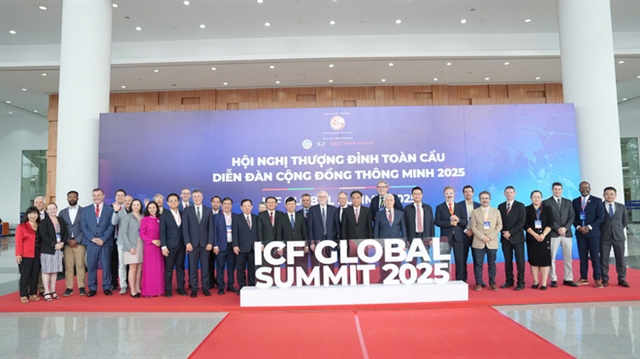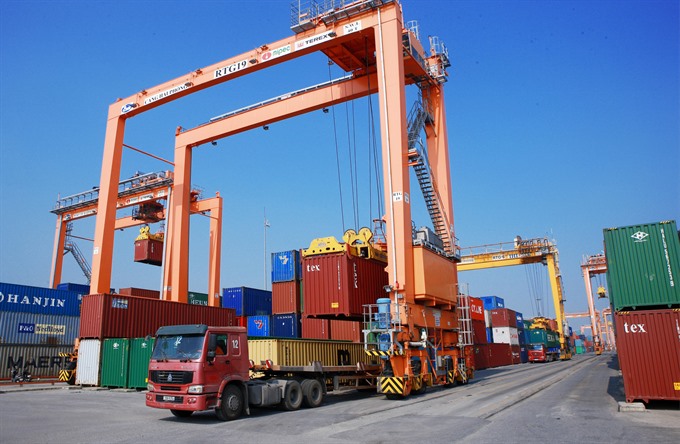 Economy
Economy

Deepening structural reforms is crucial to Việt Nam’s growth, World Bank Country Director Ousmane Dione said as the organisation released a biannual review of the country’s economic performance in Hà Nội yesterday.
 |
| Containers being loaded at Hải Phòng Port. — VNA/VNS Photo Lâm Khánh |
HÀ NỘI — Deepening structural reforms is crucial to Việt Nam’s growth, World Bank Country Director Ousmane Dione said as the organisation released a biannual review of the country’s economic performance in Hà Nội yesterday.
The Taking Stock report says despite a fragile global environment, Việt Nam’s economy remains resilient thanks to robust domestic demand and export-oriented manufacturing.
Its medium-term outlook remains favourable, with gross domestic product (GDP) expected to expand by 6 per cent this year.
The report revealed that Việt Nam’s growth slowed to 5.9 per cent during the first nine months of the year, mainly because of severe drought that has reduced agricultural output, cut oil production and slowed external demand.
The fundamental drivers of growth of domestic demand and export oriented manufacturing remain in place.
Việt Nam’s growth was accompanied by low inflation and a widening current account surplus. Despite price hikes for health and education services, core inflation remains low and headline inflation is expected to stay below official targets of 5 per cent.
“Việt Nam’s macro-economic stability creates a favourable environment for policy makers to accelerate structural reforms, which is crucial as the country moves toward a more productivity-led growth model,” said Dione.
The report says Việt Nam’s fiscal deficit remains sizable and is approaching the statutory limit of 65 per cent of GDP, but the government has reinforced its commitment to achieving fiscal consolidation in the medium term.
The economy’s recent performance owes in part to rapid credit growth and an accommodative fiscal stance, which may support growth in the short term but amplify existing medium-term risks.
In addition, easing monetary conditions and reducing credit growth can exacerbate existing macro-economic and financial vulnerabilities.
Several risks could affect medium-term prospects, including delayed implementation of structural and fiscal reforms, a further slowdown in the global economy, fragile global financial market conditions, and the prospect of rising interest rates in the US.
The report also discussed how the agricultural sector can bring about more economic value and better livelihoods for farmers and consumers, using less natural and human resources but without degrading the environment. — VNS




